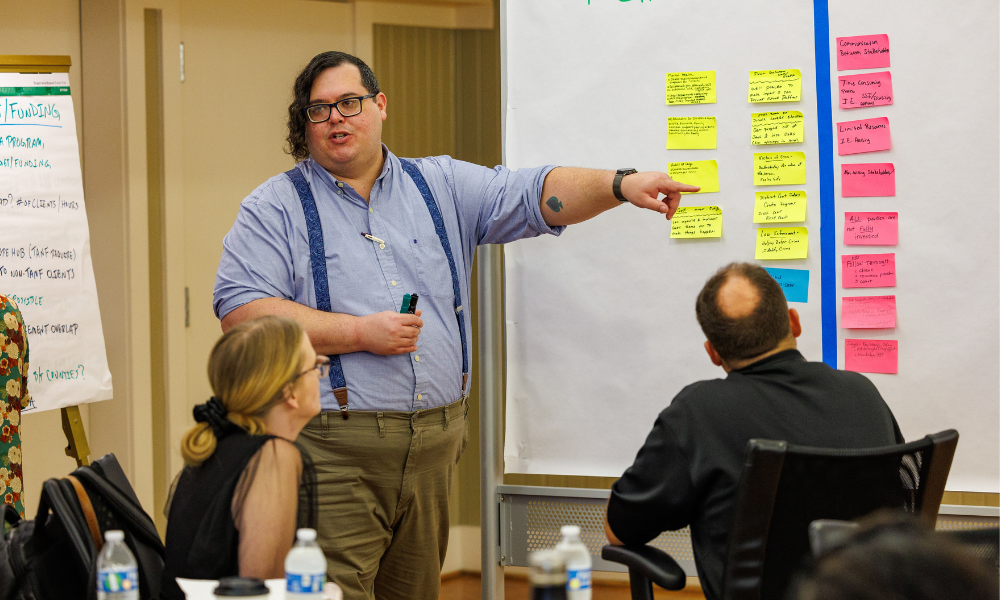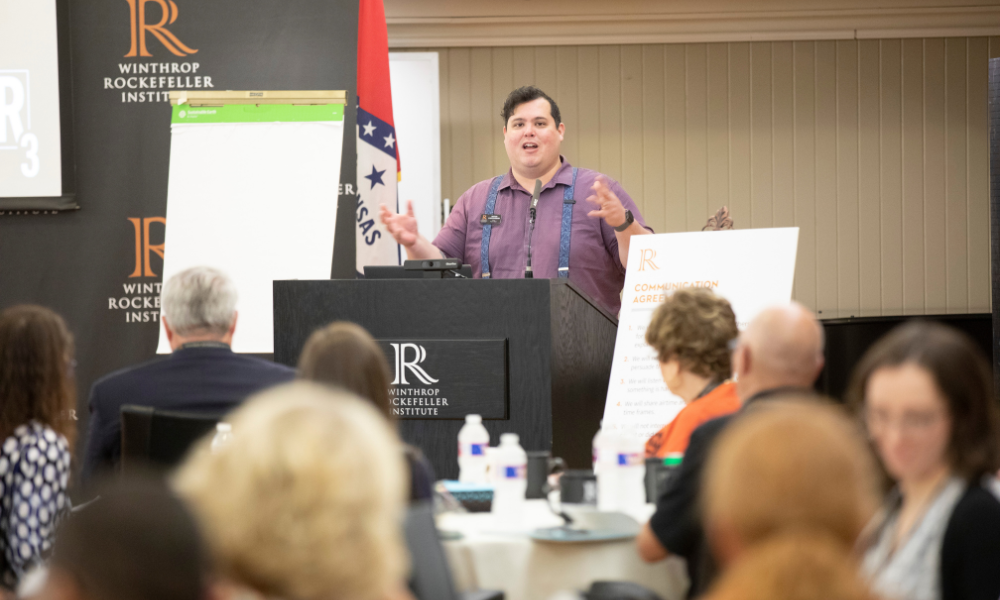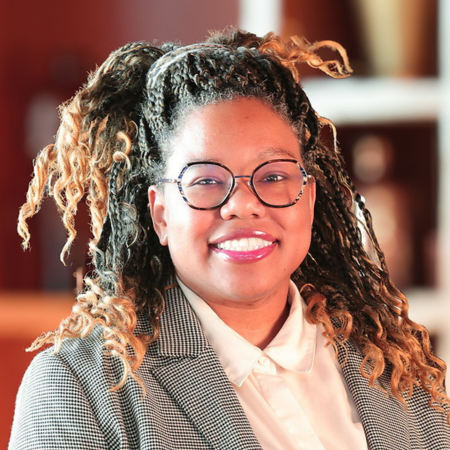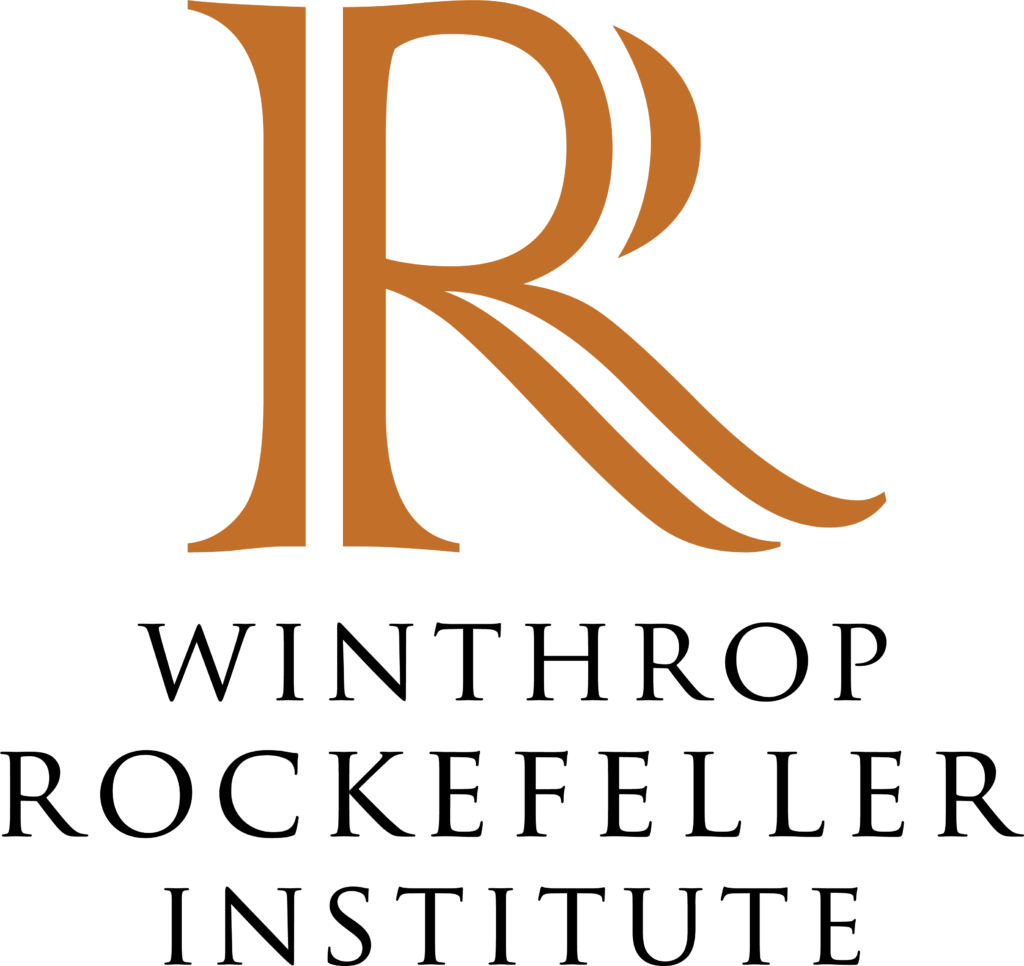by Brittany Reese
Payton Christenberry, director of our Facilitation Services team, has been at the Institute for more than a decade. He helps groups apply the Rockefeller Ethic by designing and leading facilitated convenings.
Payton designs meetings that foster connection and progress, both on Petit Jean Mountain and across Arkansas, working with groups from 5-member executive teams to 150-person collaboratives focused on rural health care, education policy, and workforce development.
In February 2025, Payton completed an Executive Certificate in Facilitation from the School of Continuing Studies at Georgetown University in Washington, D.C. According to the university, the cohort-based program equips senior leaders to design and lead effective in-person meetings, combining interactive instruction, reflection, and hands-on practice with opportunities to connect with fellow professionals.


How long were you in the program?
It was four months. Classes were held three days a month, with some courses on campus. In between each in-person class, there were virtual meetings. January was our last in-person one. After our final in-person class, we had one final virtual meeting and a final paper.
What made you want to complete the certificate program?
I’m always looking for new techniques and training opportunities, and this one stood out. Carder Hawkins, our chief strategy officer, and I were exploring options when he came across this Georgetown program. It wasn’t an intro course, but for folks with facilitation experience.
Georgetown’s reputation and the fact that both instructors, Maya Bernstein and Rae Ringel, are active, practicing facilitators, made it even more appealing. Rae went from one of our sessions straight to leading a 300-person facilitation in Mexico City, so the insights were grounded in real, current practice.
Another major draw to the program was the opportunity to connect with other experienced facilitators in an intensive setting. While we have an informal network in Arkansas, I wanted to see how facilitation looks in places like D.C. The Institute focuses on strategic planning, team cohesion, and problem solving. I was curious how others define and deliver impact.
Facilitators’ delivery styles vary. Some use charts, others use visuals, but at the core, it’s about clarity and knowing why you’re meeting. Our Executive Director/CEO, Janet Harris, likes to ask, “What’s different when we’re done?”


What was your favorite part of the program, and what was the biggest takeaway?
One of my favorite parts of the program (outside of networking and gaining new perspectives) was trying things out. It resonated well because I’m a hands-on learner. I want to test the thing out and experience it, to see how it feels as a participant, and then go to a higher level and dissect it to explore what worked well and what might work differently outside of a training program.
Another one of my takeaways was that our sessions involved exploring concepts or topics, trying out a few different exercises, and then debriefing together. I appreciated that approach.


What are some things you plan on using in the near and long term?
I want to reconfirm that the basics and core concepts we carry out at the Institute are sort of universal. One of the key concepts I think I will take away from the program for future work is exploring the participant side of things — what you want them to experience in affective, behavioral, and cognitive ways.
- What do you want them to feel?
- What do you want them to do?
- What do you want them to know or think during your design?
You design an overarching version of the facilitation, but it was most useful for me to think about that in terms of the exercises.
During the program, I learned there are many different facilitation styles. With some of them, the end goal is just having a good conversation and connecting with people. At the Institute, whether in our facilitation services or programs, we often design with long-term action or ongoing collaboration in mind.
While we can guide participants through exercises, the real challenge is ensuring they follow through on their commitments afterward. They need clarity on what they’ve committed to, understanding of their next steps, and knowledge of how they’ll be held accountable — whether to each other, the process, or themselves — to act on the work they identified.


Have you had memorable experiences while earning your certificate?
The program regularly brought in guest instructors, often alumni from earlier cohorts, which I appreciated. Their diverse perspectives aligned with our Rockefeller Ethic and enriched our learning.
One facilitator mentioned Sam Kaner’s Facilitator’s Guide to Participatory Decision-Making, a core text at the Institute. We use Kaner’s Diamond framework to move from divergent to convergent thinking, helping groups break out of typical meeting patterns, explore unconventional ideas, and make well-informed decisions based on a wide range of perspectives.
One thing that makes me feel good about the time I invested in this certificate is gaining all these tools, techniques, and trades. There is a booklet full of exercises, or what they call modalities, and where and how to use them. The booklet gave me a new source of things to use and formal names for our practices here.
The caliber of service that we offer to people in Arkansas means that when we are working through an issue, helping someone come to a decision, being a more effective team together, or setting their strategic visioning plan for the next three to five years, we are truly working them through a process that doesn’t just make sense to us; it makes sense to other facilitators that we know what those best practices are.


Was there anything memorable about the campus itself?
We were in one of Georgetown’s downtown buildings in Chinatown, not too far from the National Mall. It was surrounded by many great restaurants, interesting architecture, parks, and other attractions, so that was pretty fun.
Walking around the nation’s capital is amazing. Some of my cohort members recommended visiting the Korean War Memorial, which is just up from the National Mall. It has some very haunting sculptures that are well put together and amazing at night. My favorite place to eat while visiting Georgetown was a ramen place called Menya Hosaki.

